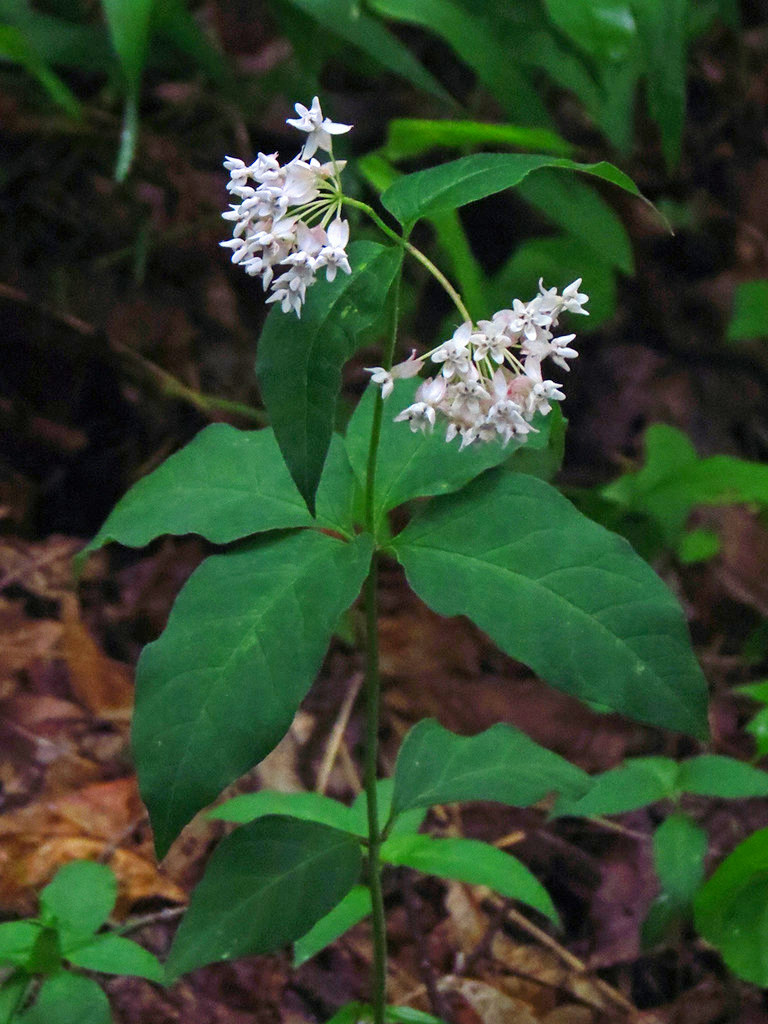Polk County’s Most Wanted: the Four-leaf Milkweed

Conserving Carolina and botanist/ecologist David Campbell need your help in locating this month’s “Polk County’s Most Wanted—Plant,” a lesser-known species of Milkweed, the Four-leaf Milkweed (Asclepias quadrifolia). Polk County’s Most Wanted is a community science initiative with a new challenge each month, in which you can expand the scientific understanding of the flora and fauna of Polk County.
As the name suggests, this species of Milkweed has its leaves in ‘fours’ (in this case in a diagnostic whorled arrangement around the main stem of the plant). Four-leaf Milkweed is a rhizomatous perennial with leaves that are obovate to lanceolate and terminating in a sharp point. The leaves are, on average, two to five inches in length. Most plants are between eighteen and twenty four inches in height and have a slender stem and leaf petioles. The flowers, which are white, are borne in loose terminal umbels (clusters) from mid-May to early June in our region.
This species occurs from southern Ontario and New England into the eastern portions of some of the Plains states. In our area, Four-leaf Milkweed prefers openings along or within mesic forests in the western part of North Carolina, preferably in basic soils that are underlain by mafic and other rocks. Although technically not rare, this species is uncommon, and it would be valuable to learn more about its distribution and habitat requirements in our state. There are a handful of records of Four-leaf Milkweed from Polk County, with the majority being in the Tryon Peak area along roadsides. Now would be an excellent time to look for this beautiful and elusive species in our area.
If you feel that you have seen Four-leaf Milkweed in Polk County, please make a clear image of the plant, and email it to [email protected] for evaluation.
Click here for more information about “Polk County’s Most Wanted” and to download and print a “Pocket Guide” with all of the “Most Wanted” plants, animals, and habitats that you can be on the lookout for!
Also, a culmination of David Campbell’s seven years in the field documenting the rare and significant flora and fauna in Polk County have been compiled in a book titled, “An Inventory of the Significant Natural Areas of Polk County, North Carolina.” The document can be downloaded for free on Conserving Carolina’s website at conservingcarolina.org/polk-county-inventory, or a hard copy can be purchased, at cost, on Amazon.
Conserving Carolina, your local land trust, works to protect, restore, and inspire appreciation of nature. Learn more and become a member at conservingcarolina.org.